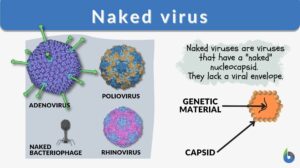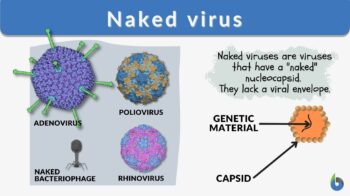
Naked virus
n., plural: naked viruses
[ˈnɛkɪd ˈvaɪɹəs]
Definition: virus lacking the viral envelope
Table of Contents
Viruses are infectious entities with size ranges between 20 to 400 nanometers. The mammoth-sized virus would be about the size of the smallest bacteria. Viruses, such as Corona, HIV, swine flu, the common flu, and several others, are a significant cause of mortality and infection in plants and animals. Viral replication proteins can help form viral structures, reproduce viral genomes, and defend against host cell defenses (Wiencek, 2021). In viruses, the protein coat decides if a virus is enveloped or non-enveloped. But what is a naked virus? Let us define naked virus.
Naked Virus Definition
The viruses that do not have a lipid envelope around the capsid, and thus, have a “naked” capsid are referred to as naked viruses.
To understand that, let us know the general structure of a virus. Viruses have a genetic material (nucleic acid) wrapped in a protein covering called a capsid. The viral capsid is made up of capsomeres and it surrounds the nucleic acid (DNA or RNA). Thus, the capsid and the genetic material it contains are collectively known as the nucleocapsid. Outside the capsid is a viral envelope that is made up of lipids and proteins. A lipid bilayer viral envelope could be derived from the host cell membrane as the virus buds off to leave the cell.
Do all viruses have an envelope? No! Naked viruses, or non-enveloped viruses, do not have a viral envelope. They have only the capsid. This characteristic is the primary basis in distinguishing them from the enveloped viruses. As the name implies, enveloped viruses are viruses that have a viral envelope surrounding the capsid. They use the envelope layer for docking onto the host cell surface. They, then, enter the cell through clathrin-mediated endocytosis or by fusing with the host cell membrane and then releasing the nucleocapsid into the cell.
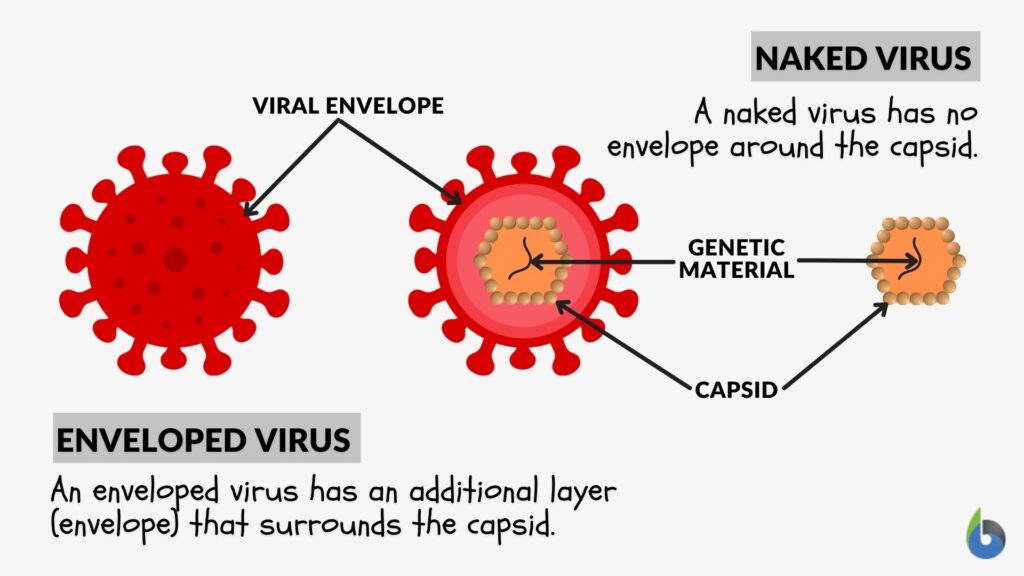
In microbiology, naked viruses are defined as tiny viruses that do not have a lipid envelope, unlike the enveloped viruses that have an additional layer around their protein capsid. Thus, naked viruses have only the protein coat surrounding their genetic material. In spite of that, they are extremely resilient to several disinfectants and other stressors such as drying out or heat because they lack a lipid sheath, which when present can be disrupted by a disinfectant.
A naked virus is a virus lacking the viral envelope. Naked viruses pertain to those that only have nucleocapsid, which is a protein capsid that covers the genome of the virus. Some of the naked viruses are parvoviruses, papovaviruses, adenoviruses, and reoviruses. These viruses use their nucleocapsid to enter cells. Synonym: non-enveloped virus; non-encapsulated virus. See also: envelope
Many naked viruses have devastating effects on living organisms. Although non-enveloped viruses lack a lipid coating, their impact on humans can be just as severe. This is because naked viruses tend to leave the host cell through cell lysis, thus, killing the host cell. In contrast, an enveloped virus would leave the cell by budding through the membrane of the host cell and therefore does not directly kill the cell.
Naked Virus vs. Enveloped Virus
Here is a summary of the difference between a naked virus and an enveloped virus:
Table 1: Differences between naked viruses and enveloped viruses | ||
|---|---|---|
| Naked Viruses | Enveloped Viruses | |
| Definition | Viruses without an envelope | Viruses with an envelope on the exterior |
| Structure | Nucleocapsid | Nucleocapsid + Viral Envelope |
| Virulence | More virulent | Less virulent |
| Host lysis | May cause host lysis upon exit | Rarely; often leaves cells by budding off the host cell membrane |
| Susceptibility to disinfectants | Less susceptible to disinfectants | More susceptible to disinfectants |
| Sensitivity to heat and dryness | Resistant to heat and dryness | Sensitive to heat and dryness |
| Examples | Norovirus, parvovirus, HAV | HIV, HBV, adenovirus, influenza virus |
Watch the vid below for a more thorough understanding of their differences:
Non enveloped Virus Examples
Depending upon their structures, non-enveloped viruses are classified into two main categories, i.e., non-enveloped RNA viruses and non-enveloped DNA viruses. Examples of non-enveloped RNA viruses are norovirus, rhinovirus, and poliovirus, while non enveloped DNA viruses are parvoviruses, papovaviruses, and adenoviruses. We will explain the examples mentioned above in the following:
Norovirus

A norovirus virus can induce severe vomiting and diarrhea all of a sudden. The virus is highly infectious and is distributed most usually through contaminated food or drink and infected surfaces. Infection with norovirus is more common in enclosed and congested situations, such as hospitals (Clinic, 2021). The following are signs of norovirus infection:
- Nausea
- Vomiting
- Constipation or stomach cramps
- Diarrhea that is watery or loose
Rhinovirus
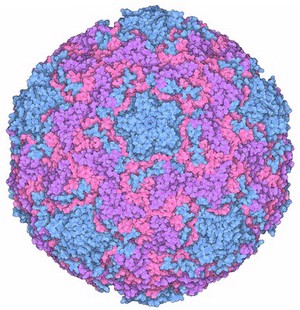
The common cold is caused by a virus called rhinovirus. A runny nose, sore throat, and sneezing are common symptoms of illness, which can progress to headaches, coughing, and muscular pains. Although most rhinovirus infections are minor, they can occasionally result in bronchiolitis and pneumonia. In addition, rhinovirus is easily transmitted from one person to the next. Therefore, the spray from a sick person’s cough or sneeze poses a serious danger of infection (Information, 2021). The following are signs of rhinovirus infection:
- Runny Nose
- Sneezing
- Sore throat
- Cough
Poliovirus
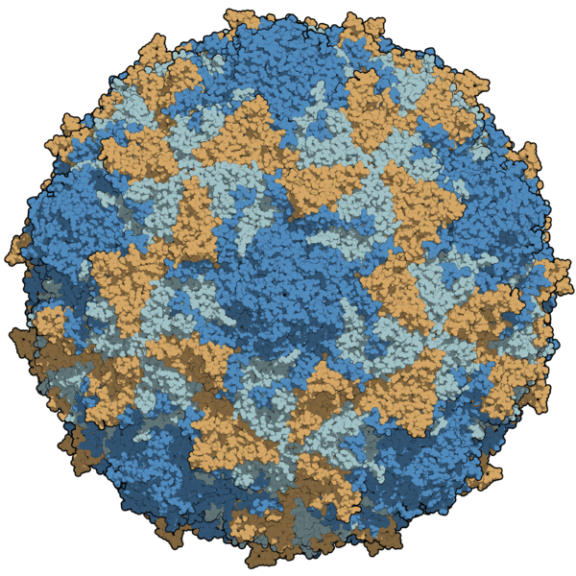
An RNA genome and a protein capsid make up the poliovirus. The viral molecule has an icosahedral configuration and is roughly 30 nm in diameter. Poliomyelitis, sometimes known as polio, is a debilitating and potentially fatal illness caused by the poliovirus. The virus may transmit from person to person and invade the spinal cord, resulting in paralysis. The majority of persons who get poliovirus have no obvious symptoms (Immunization, 2021). The following are signs of rhinovirus infection:
- Sore throat
- Fever
- Tiredness
- Nausea
Canine Parvovirus
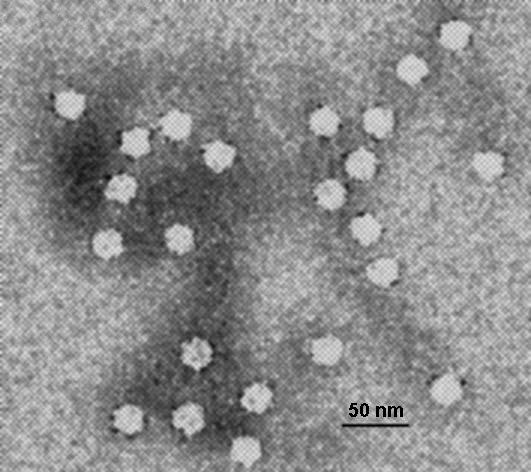
Canine parvovirus is a highly infectious naked RNA virus that infects dogs. Direct or indirect contact is used to disseminate the virus (through feces). Vaccines can help prevent illness, but delaying treatment can raise the risk of death. The onset of signs and symptoms might take anywhere from 3 to 14 days. Loss of appetite, fever, vomiting, and diarrhea are all symptoms. Amplicon, cephalexin, and fluoroquinolones are some of the most often used antibiotics (depending on age). These viruses have a diameter of 18-26nm.
Papovavirus
Figure 6: Papovavirus From:
Papovaviruses are members of the Papoviridae family, which also includes another non-enveloped icosahedral virus with double-stranded circular DNA. The diameter ranges from 45 to 55 nanometers. Papovaviruses grow in the nucleus of cells, where they seem to be arranged in crystalline patterns. Skin warts, anogenital warts (cervical cancer), oral papilloma tongue, and skin carcinomas are all disorders associated with this virus (“parvovirus | virus”, 2021). The following are signs of papovavirus infection:
- Warts
Adenovirus
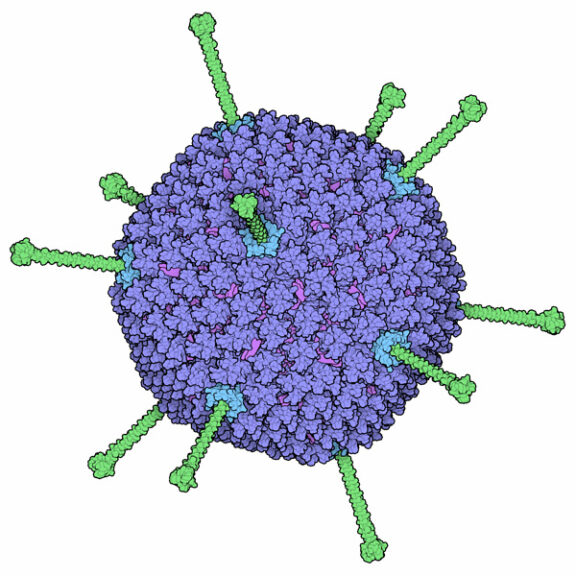
Adenoviruses infect the lining of your eyes, airways and lungs, intestines, urinary tract, and brain system, among other places. Fever, coughing, sore throats, and pink eye are all symptoms. Infections affect children more frequently than adults, but they may affect everyone. The conditions normally only produce minor signs and clear up on their own within a few days. They are, however, more dangerous in those with weakened immune systems, particularly youngsters. In settings with large children, such as daycare facilities, schools, and summer camps, these infections are frequent (Watson, 2020).
Try to answer the quiz below to check what you have learned so far about naked viruses.
References
- Clinic, M. (2021). Norovirus infection – Symptoms and causes. Mayo Clinic. Retrieved 20 November 2021, from https://www.mayoclinic.org/diseases-conditions/norovirus/symptoms-causes/syc-20355296.
- Information, H. (2021). Rhinovirus | Intermountain Healthcare. Retrieved 20 November 2021, from https://intermountainhealthcare.org/health-information/germwatch/germ-school/rhinovirus/
- Immunization, G. (2021). What is Polio?. Retrieved 20 November 2021, from https://www.cdc.gov/polio/what-is-polio/index.htm
- Watson, S. (2020, December 01). Retrieved November 11, 2021, from WebMD: https://www.webmd.com/children/adenovirus-infections
- parvovirus | virus. Encyclopedia Britannica. (2021). Retrieved 20 November 2021, from https://www.britannica.com/science/parvovirus.
- Wiencek, M. (2021). Are All Viruses the Same? Nope!. Contecinc.com. Retrieved 20 November 2021, from https://www.contecinc.com/articles/viruses-are-not-the-same/.
©BiologyOnline.com. Content provided and moderated by Biology Online Editors.

